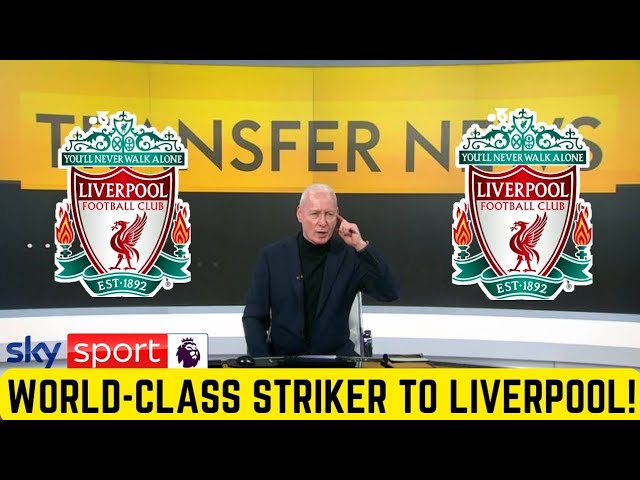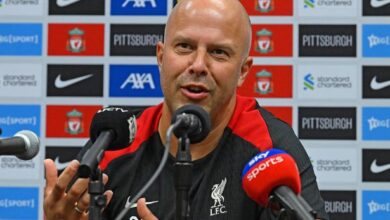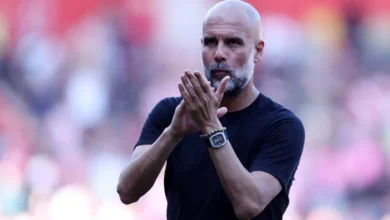Liverpool’s Transfer Strategy: The Isak Pursuit and Alternative Options

Liverpool Football Club finds itself at a fascinating crossroads in the transfer market, with their ambitious pursuit of Newcastle United’s Alexander Isak representing both their lofty aspirations and the complex realities of modern football economics. The Swedish striker has emerged as one of the most coveted talents in European football, and Liverpool’s interest in him reflects their determination to strengthen their attacking options under Arne Slot’s management.
The Premier League season has provided a mixed bag of results for Liverpool, with their recent performances highlighting both their potential and areas that require improvement. Their ability to secure impressive victories against top-tier opposition has been balanced by moments of inconsistency, particularly in their attacking third. This has led to increased speculation about potential reinforcements, with Isak representing the type of transformative signing that could elevate Liverpool’s ambitions to new heights.
Alexander Isak’s journey from Real Sociedad to Newcastle United has been nothing short of remarkable. The 25-year-old Swedish international has established himself as one of the most clinical finishers in the Premier League, combining physical presence with technical ability in a way that few strikers can match. Standing at 6 feet 4 inches, Isak possesses the aerial threat that modern football demands while maintaining the pace and movement that can terrorize even the most organized defenses.
His track record against Liverpool has been particularly impressive, with four goals in six appearances across all competitions. This consistent performance against high-quality opposition has not gone unnoticed at Anfield, where Virgil van Dijk himself has acknowledged Isak’s quality, describing him as “definitely the most in-form striker at the moment in world football” prior to the Carabao Cup final. The fact that Isak then proceeded to score in that Wembley showpiece, helping Newcastle secure a memorable victory, only served to reinforce his credentials as a player capable of performing on the biggest stages.
The reported £120 million valuation placed on Isak by Newcastle United reflects both his importance to Eddie Howe’s project and the current inflation in the transfer market. For Liverpool, such an investment would represent a significant statement of intent, demonstrating their commitment to competing at the highest level both domestically and in European competition. However, the financial implications of such a deal cannot be understated, particularly in the context of Financial Fair Play regulations and the need to maintain squad balance.
Newcastle’s reluctance to part with their prized asset is understandable given Isak’s contribution to their recent success. The striker has become integral to their tactical setup, providing not just goals but also the kind of hold-up play and link-up ability that allows their midfielders and wingers to thrive. His partnership with the likes of Anthony Gordon and Harvey Barnes has been a key factor in Newcastle’s improved fortunes, making any potential departure a significant blow to their ambitions.
The modern transfer market operates under increasingly complex financial constraints, with clubs required to navigate a web of regulations designed to promote financial sustainability. Liverpool’s interest in Isak must be viewed through this lens, as the club weighs the potential benefits of such a significant investment against the impact on their overall squad planning and financial flexibility.
The £120 million price tag would make Isak one of the most expensive transfers in Liverpool’s history, surpassing previous record signings and representing a substantial commitment to a single player. This level of investment requires careful consideration of not just the player’s current ability but also their potential for future development and resale value. At 25, Isak represents a player entering his prime years, with the potential to provide several seasons of top-level performance.
However, the financial implications extend beyond the initial transfer fee. The wages, agent fees, and additional costs associated with such a high-profile signing can significantly impact a club’s budget, potentially limiting their ability to strengthen other areas of the squad. Liverpool’s recruitment strategy has traditionally focused on identifying value in the market, with their most successful signings often coming at more modest fees relative to their eventual impact.
Recognizing the challenges associated with securing Isak’s signature, Liverpool has reportedly identified several alternative options that could provide similar benefits at potentially more affordable prices. This approach reflects the pragmatic nature of modern football recruitment, where clubs must prepare for multiple scenarios and maintain flexibility in their transfer strategy.
Hugo Ekitike represents one of the most intriguing alternatives to Isak, with the young Frenchman currently plying his trade at Eintracht Frankfurt. The connection between Ekitike and the Isak situation is particularly interesting, as Newcastle United has identified the French striker as a potential replacement should they lose their Swedish star. This creates a complex web of interconnected transfers that could significantly impact the summer transfer window.
Ekitike’s profile as a young, dynamic striker with significant potential makes him an attractive proposition for Liverpool. His performances in the Bundesliga have demonstrated his ability to adapt to different tactical systems and his potential for further development. The fact that he is being considered as a replacement for Isak by Newcastle suggests that scouts and analysts see similar qualities in both players, albeit at different stages of their development.
The financial aspect of pursuing Ekitike could prove more palatable for Liverpool, with the French striker likely to command a significantly lower fee than Isak. This would allow the club to invest in other areas of the squad while still securing a player with the potential to develop into a top-class striker. However, the trade-off would be accepting a higher degree of risk, as Ekitike’s potential may not be realized, and his immediate impact might be limited compared to the more established Isak.
Perhaps the most surprising name linked with Liverpool is Marcus Rashford, the Manchester United forward who has found himself on the periphery of Ruben Amorim’s plans. The possibility of Rashford moving to Anfield represents one of the most controversial potential transfers in recent memory, given the historical animosity between the two clubs and the rarity of direct player movements between Liverpool and Manchester United.
Rashford’s career trajectory has been marked by both spectacular highs and frustrating lows. His emergence as a teenager at Manchester United captured the imagination of football fans worldwide, with his pace, directness, and eye for goal making him one of the most exciting young talents in English football. The 2022/23 season represented the pinnacle of his career to date, with 30 goals across all competitions under Erik ten Hag’s management earning widespread acclaim and establishing him as one of the Premier League’s most feared attackers.
However, the subsequent seasons have been characterized by inconsistency and a gradual decline in his overall contribution. His statistics over the past five seasons reveal a player whose performances have fluctuated dramatically, with moments of brilliance interspersed with periods of mediocrity. This inconsistency has contributed to his current situation at Manchester United, where he has been marginalized by Amorim’s tactical approach and system.
The comparison to Michael Owen’s controversial move from Real Madrid to Manchester United in 2009 is particularly apt. Owen, once Liverpool’s golden boy, had already seen his career trajectory decline due to injuries and the natural aging process. His move to United, while shocking at the time, ultimately proved to be a disappointment for all parties involved. The striker managed just 17 goals in 52 games over three seasons, with his most memorable contribution being a dramatic late winner against Manchester City in a 4-3 victory.
The parallels between Owen’s situation and Rashford’s current predicament are striking. Both players had achieved early success at their respective clubs, both had experienced periods of decline, and both were available for transfer when their careers were arguably past their peak. The risk for Liverpool in pursuing Rashford would be similar to Manchester United’s gamble on Owen – a high-profile signing that generates significant attention but ultimately fails to deliver the expected results.
Any potential signing must be evaluated not just in isolation but in the context of Liverpool’s overall tactical approach and squad dynamics. Under Arne Slot, Liverpool has shown a preference for a more structured, possession-based style of play compared to the high-intensity pressing that characterized Jürgen Klopp’s era. This tactical evolution has implications for the type of striker that would best fit the team’s needs.
Isak’s profile as a complete striker with the ability to hold up play, link with midfielders, and finish clinical chances aligns well with Slot’s tactical preferences. His height and physical presence would provide Liverpool with a different dimension in attacking situations, particularly from set pieces and crosses. The Swedish striker’s movement and positioning have been consistently praised by coaches and analysts, suggesting that he would adapt well to Liverpool’s tactical system.
The alternative options present different tactical considerations. Ekitike’s youth and pace could provide Liverpool with a different type of threat, potentially offering more flexibility in terms of tactical deployment. His ability to play across the front line could prove valuable in a system that requires forwards to interchange positions and create space for their teammates.
Rashford’s pace and directness have been his defining characteristics throughout his career, but questions remain about his suitability for Liverpool’s tactical approach. His tendency to drift wide and his preference for running at defenders could complement Liverpool’s existing attacking players, but his inconsistency in terms of pressing and defensive contribution might prove problematic in Slot’s system
Liverpool’s pursuit of attacking reinforcements must be understood within the broader context of the transfer market and the competitive landscape of the Premier League. The club’s rivals have also been active in strengthening their squads, with Arsenal, Manchester City, and Chelsea all making significant investments in recent windows. This competitive pressure makes it essential for Liverpool to act decisively when opportunities arise.
The striker market has been particularly active in recent years, with clubs increasingly willing to pay premium prices for proven goal scorers. The success of players like Erling Haaland at Manchester City and the impact of other high-profile striker signings have demonstrated the transformative effect that the right player can have on a team’s fortunes. This has contributed to the inflation in striker valuations and the increased competition for the most coveted talents.
Liverpool’s approach to the transfer market has traditionally been characterized by careful planning and strategic investment. The club’s success in recent years has been built on a combination of shrewd signings, excellent coaching, and the development of young talents. This approach has allowed them to compete with clubs that have significantly higher financial resources while maintaining financial sustainability.
Any discussion of Liverpool’s transfer strategy must also consider the club’s commitment to youth development and the potential of their academy graduates. The emergence of players like Harvey Elliott, Curtis Jones, and others from the club’s youth system has been a source of pride and financial benefit. The decision to invest heavily in an established striker like Isak might impact the development opportunities available to young players coming through the system.
However, the presence of a world-class striker could also benefit young players by providing them with a role model and raising the overall standard of training and performance. The competition for places that would result from such a signing could drive improvement across the squad and ensure that only the most committed and talented players secure regular playing time.
The balance between investing in established talent and developing young players is a constant challenge for modern football clubs. Liverpool’s success in recent years has been built on finding the right balance, with experienced players like Virgil van Dijk and Alisson Becker providing leadership and quality while younger players contribute energy and potential.
The decision to pursue any of these striker options involves significant risk assessment and careful consideration of multiple factors. The financial risk of investing heavily in a single player must be weighed against the potential benefits in terms of improved performance and competitiveness. The sporting risk of missing out on top targets must be balanced against the danger of making desperate signings that fail to address the team’s needs.
Liverpool’s recruitment team, led by sporting director Richard Hughes, has established a reputation for thorough analysis and careful decision-making. Their approach typically involves extensive scouting, detailed performance analysis, and consideration of how potential signings would fit into the team’s tactical system and culture. This methodical approach has generally served the club well, with more successful signings than failures in recent years.
The pressure to make a significant signing can sometimes lead to poor decision-making, as clubs rush to complete deals without proper due diligence. The examples of expensive signings that have failed to live up to expectations serve as cautionary tales for any club considering major investments in the transfer market.
Liverpool’s pursuit of Alexander Isak and consideration of alternative options represents a critical juncture in the club’s development under Arne Slot. The decisions made in the coming transfer windows will likely have a significant impact on the team’s ability to compete for major honors and maintain their position among England’s elite clubs.
The ideal scenario would see Liverpool secure Isak’s signature, providing them with a world-class striker who could immediately improve their attacking options and help them compete for the Premier League title and Champions League. However, the financial realities of modern football may make this difficult to achieve, requiring the club to consider alternative approaches.
The key to successful recruitment lies in maintaining flexibility and having multiple options available. Liverpool’s reported interest in players like Ekitike demonstrates their understanding of this principle, as they position themselves to act quickly if their primary target becomes unavailable or too expensive.
The Rashford option, while controversial, highlights the complex nature of modern transfer dealings and the need for clubs to explore all available avenues. However, the risks associated with such a signing would likely outweigh the potential benefits, making it a move that would be best avoided.
Ultimately, Liverpool’s success in the transfer market will depend on their ability to identify players who can improve the team both immediately and in the long term. The club’s track record suggests that they have the expertise and resources to make the right decisions, but the pressure to compete at the highest level means that there is little margin for error.
The coming months will reveal whether Liverpool can secure their preferred targets or whether they will need to adapt their strategy based on market conditions and availability. Whatever path they choose, the decisions made will play a crucial role in determining the club’s future success and their ability to compete with the best teams in European football.
The transfer market remains as unpredictable as ever, with clubs constantly adapting their strategies based on changing circumstances and opportunities. Liverpool’s pursuit of striking reinforcements represents just one chapter in the ongoing story of modern football recruitment, where success depends on careful planning, strategic thinking, and the ability to act decisively when the right opportunities arise.















